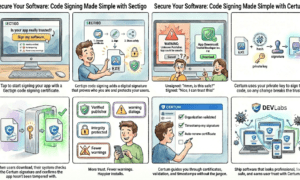Working from home should increase your productivity but many people end up feeling overwhelmed instead. I know the feeling. Your day becomes consumed by email accumulation and meeting participation and application switching. Remote work productivity requires less effort than people believe. The right tools eliminate workflow obstacles to boost productivity.
This guide presents 15 essential remote work tools which will be available in 2025. The following list contains both free and paid tools which I have discovered to be most beneficial for freelancers and remote employees. The following tools will help you stay organized and collaborate easily while actually completing more work after you finish reading this guide.
1. Slack
Slack is a chat platform that keeps team conversations in one place. You can create channels for projects, clients, or topics. It also connects with many other apps, which cuts down on email.
Best for: Teams that want quick, organized communication.
2. Zoom
Zoom is a video meeting tool used worldwide. It is known for clear calls and simple scheduling. It works for small team check-ins and large webinars.
Best for: People who need steady video calls with clients or coworkers.
Clear communication is the backbone of remote work. Tools like Zoom and Slack have become essential for every distributed team.
“You can also check out this detailed guide on Cloud-Based WFM that covers both communication and workforce management.”
3. Google Drive (Workspace)
Google Drive stores files in the cloud and lets people edit documents together. Tools like Docs, Sheets, and Slides are built in. You can see updates in real time.
Best for: Anyone who needs to share files or work on them with others.
When working remotely, fast and secure file sharing is a must. Google Drive and Dropbox are among the most trusted options.
“You can explore more features directly on the Google Drive official site.”
4. Trello
Trello uses boards, lists, and cards to track tasks. You move cards from “To Do” to “Doing” to “Done.” It is easy to see what still needs work. Trello is a good remote work tool to ease your life.
Best for: Freelancers or small teams that want a simple task manager.
5. Asana
Asana helps teams plan projects. You can assign tasks, set deadlines, and check progress on a timeline. It works well when projects have many steps.
Best for: Teams with complex projects and many moving parts.
To keep projects organized, tools like Trello and Asana are highly effective. They make it easier to assign tasks and track deadlines.
“Here’s a blog on Best Remote Work Routines that perfectly complements these task management tools.”
6. Notion
Notion combines note-taking, task lists, and databases in one tool. You can build pages that act as a wiki or a project hub. It is flexible enough for personal or team use.
Best for: Workers who want one space for notes, plans, and shared documents.
7. ClickUp
ClickUp brings tasks, chat, and documents into one platform. It cuts down on the need for separate apps. Some teams use it as their main work hub.
Best for: People who want an all-in-one productivity tool.
8. Loom
Loom lets you record quick video messages. Instead of writing long emails, you can explain by showing your screen and speaking at the same time.
Best for: Remote workers who want to share clear updates without scheduling a meeting.
9. Miro
Miro is an online whiteboard. Teams use it to brainstorm, plan projects, or map out ideas together. It gives remote teams a shared creative space.
Best for: Teams that want a place to brainstorm or plan visually.
10. Calendly
Calendly makes scheduling simple. You share a link, and others pick a time that works for them. It handles time zones for you.
Best for: Freelancers and consultants who book meetings often.
11. Grammarly
Grammarly checks spelling, grammar, and clarity in your writing. It works in documents, email, and chat apps.
Best for: Anyone who wants clear and professional writing.
12. Toggl Track
Toggl Track makes it easy to log work hours. You can start and stop timers with one click. Reports show how much time goes to each task.
Best for: Freelancers who bill by the hour or anyone who wants to see how they use their time.
13. Canva
Canva is a design tool with ready-made templates. You can make social posts, slides, or flyers without special training.
Best for: Small businesses and freelancers who need quick graphics.
14. Krisp
Krisp blocks background noise on calls. It filters out sounds like barking dogs or traffic. This makes calls clearer and more professional.
Best for: People who work in noisy spaces but need quiet calls.
15. Zapier
Zapier links different apps and automates tasks. For example, it can copy form entries to a spreadsheet or send alerts in Slack.
Best for: Workers who want to save time by automating routine work.
Pricing Overview: Remote Work Tools
|
Tool |
Free Plan Features |
Paid Plan Starting Price (Monthly) |
| Slack | 90-day history, 10 integrations | $8.75 per user |
| Zoom | 40-min group calls, 100 participants | $15.99 per user |
| Google Drive | 15GB storage, Docs/Sheets/Slides | $6 per user (Workspace) |
| Trello | Unlimited boards/cards, 1 power-up | $5 per user |
| Asana | Basic project tracking for up to 15 users | $10.99 per user |
| Notion | Unlimited pages/blocks, 10 guests | $8 per user |
| ClickUp | Unlimited tasks, 100MB storage | $7 per user |
| Loom | 25 videos, 5-min max length | $12.50 per user |
| Miro | 3 boards, basic templates | $10 per user |
| Calendly | 1 event type, basic calendar integration | $10 per user |
| Grammarly | Grammar and spelling checks | $12 per user |
| Toggl Track | Unlimited tracking for individuals | $10 per user |
| Canva | 250,000 templates, basic graphics | $12.99 per user |
| Krisp | 60 mins/day noise cancellation | $8 per user |
| Zapier | 100 tasks/month, single-step automations | $19.99 per user |
Conclusion: Choose Right Remote Work Tools
Remote work extends beyond the physical location of your workspace. The establishment of effective systems enables you to achieve better work performance. The correct tools enable you to reduce time consumption and minimize interruptions while maintaining stress-free collaboration.
New remote workers should begin with free versions of available Remote Work tools. Slack serves as a communication tool while Google Drive supports collaboration and Toggl functions as a time tracking solution which provide a solid foundation for remote work. Your workflow will benefit from upgrading to Asana and Notion or Zapier when your workload expands.
The main challenge lies in preventing excessive Remote Work tools implementation. Evaluate each tool before selecting the essential ones that deliver actual benefits while discarding the rest. The correct combination of tools will make remote work in 2025 both more productive and more enjoyable than previous years.
Author Bio
Faizan Imran is a content writer and proofreader with 3 years of experience. His website FlowWorkHub.com is dedicated to remote work and productivity.



































